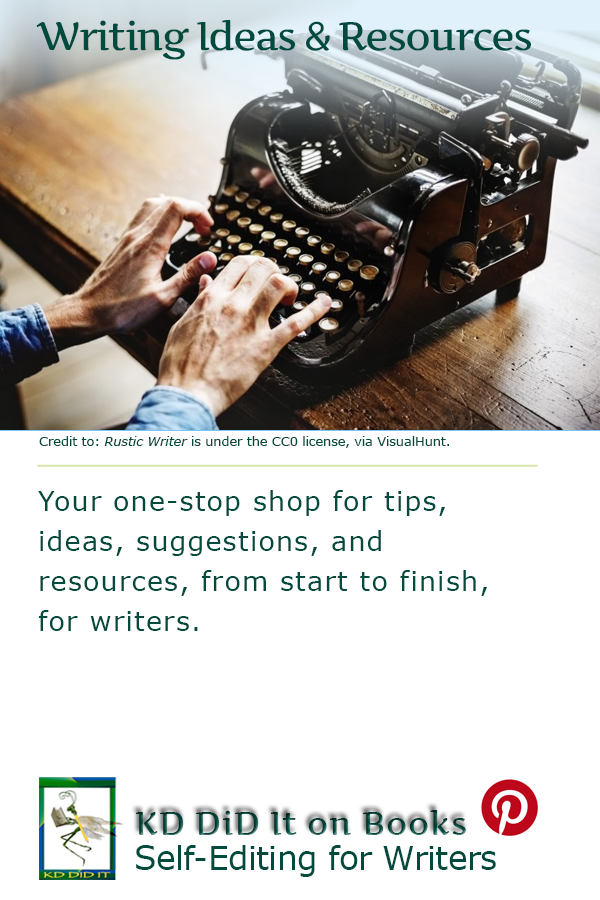. . . a lot of work. And I don’t just mean that bit about sitting down at the typewriter!
It’s coming up with a plot with beats, scenes, conflicts, and resolution. It’s a theme. It’s characters with whom your reader can empathize (or despise!). Which genre do you intend to write to. What novel type will you use. Which point-of-view would best suit the story. How a story is structured. The difference between a panster and a planner. Style sheets. Outlines. And the resources to answer more of your questions.
Writing Tips Posts
Point-of-View and Perspective are Intertwined Yet Distinct
Protagonist (as a Writing Tip)
Protagonist, vs Antagonist (as a word confusion)
Anatomy of Writing Ideas and Resources
Writing Ideas and Resources uses the same table format as Behind the Scenes of Your Author Website, Formatting Tips, Grammar Explanations, Properly Punctuated, and Word Confusions, incorporating general definitions and rules with a table of contents of the post contents. It also uses a color hierarchy to organize sub-topics while noting style guide specifics, pertinent rules, and examples of how that topic is used.
This list is in no way complete, and I’d love it if you’d send your own suggestions and comments . . . I don’t necessarily promise to include them, but . . .
If you know someone who could use some help with their own questions, confusions, or ideas, consider subscribing to KD Did It, if you’d like to track this aid on writing ideas for future updates . . . ’cause I’m always adding to earlier posts as I discover more tips and resources.
Pinterest Photo Credits
Rustic Writer is under the CC0 license, via VisualHunt.
Revised as of 24 October 2024
By: Kathy Davie

